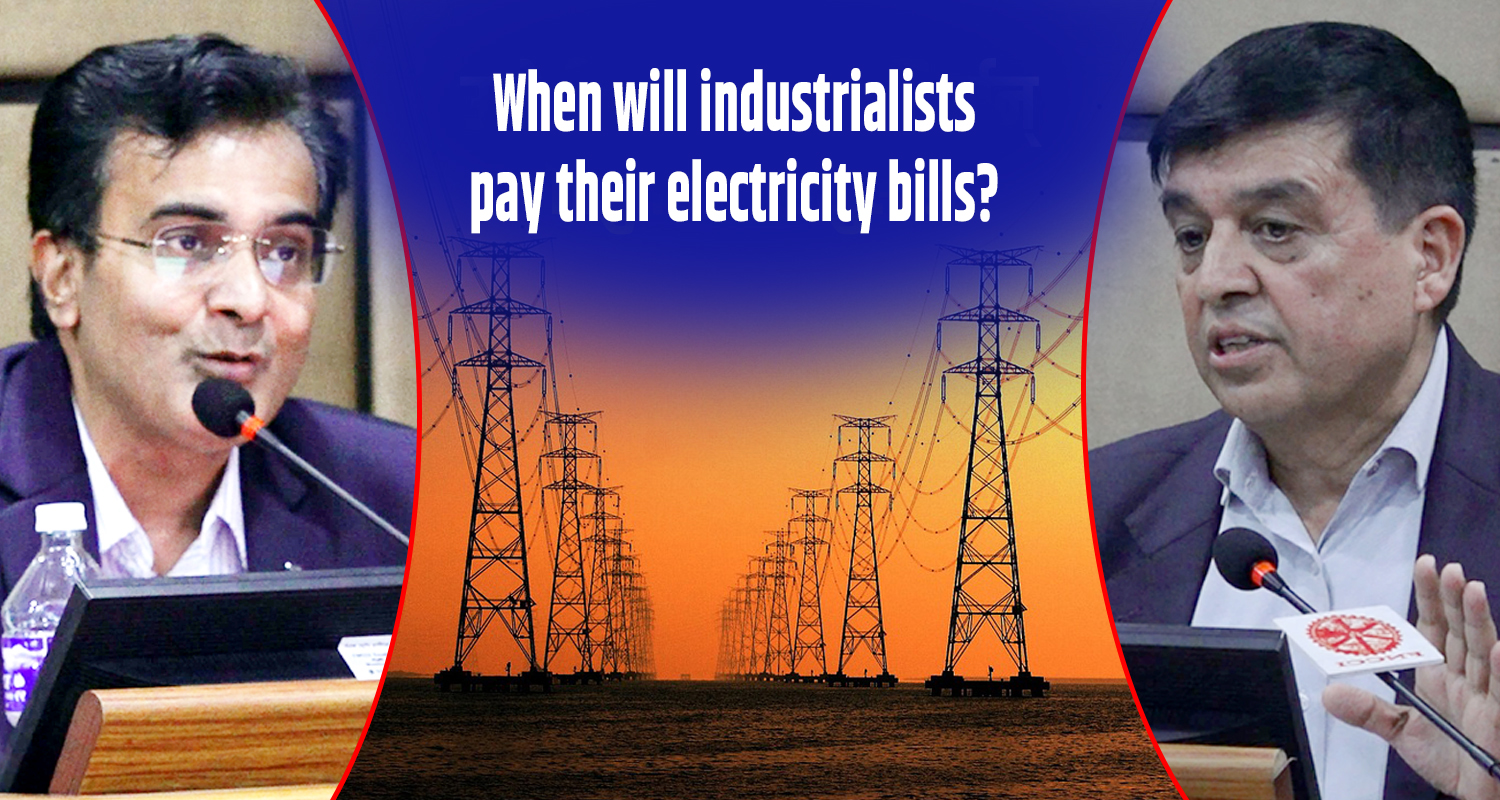
Kathmandu- Following the Gen Z protests of September 8 and 9, the Nepal Electricity Authority (NEA) has intensified the disconnection of electricity lines to industries that have refused to pay premium tariffs for electricity supplied through dedicated feeders and trunk lines, under the directive of Energy Minister Kulman Ghising, a member of the interim government formed after the uprising.
So far, electricity supply to around two dozen industries has already been cut off. Most of these industries have had to halt production, while a few have been running their operations using generators.
On Monday, President of the Federation of Nepalese Chambers of Commerce and Industry (FNCCI), Chandra Prasad Dhakal, attended a high-level meeting with Prime Minister Sushila Karki, Finance Minister Rameshwor Khanal, Industry Minister Anil Kumar Sinha, Energy Minister Kulman Ghising, Chief Secretary Ek Narayan Aryal, and other secretaries to discuss resolving the issue on behalf of the private sector.
According to a press release issued by FNCCI after the meeting, a middle-ground understanding was reached — that industries would deposit the first installment of the disputed amount as collateral, the disconnected power lines would be reconnected immediately, and legal procedures regarding the matter would continue.
Following this understanding, four industries have already deposited the first installment as collateral, after which their electricity connections were restored.
However, disagreements remain over whether the payment should be treated as collateral or installments.
The industrialists insist that they are willing to deposit 5% of the disputed amount as collateral to have their power reconnected, but the government maintains that it will not accept collateral and demands that payment be made strictly in installments.
This shows that industrialists are still unwilling to pay the premium tariff for electricity supplied through dedicated feeders and trunk lines. They claim to have already cleared their regular electricity dues. Their position is that they are depositing collateral only to have their power restored and will pursue legal recourse afterward.
Industrialists have repeatedly claimed that they never used electricity through dedicated feeders or trunk lines. They argue that if they did, the NEA should provide Time of Day (ToD) meter data as proof. If such evidence is provided, they say, they are ready to clear the outstanding dues.
FNCCI’s mediation efforts have been received positively by industrialists. However, Energy Minister Kulman Ghising has maintained that industries must pay in installments, not collateral, otherwise the disconnection process will continue. The industrialists, on the other hand, have made it clear that they do not agree to the installment system, and appear determined not to pay the premium tariff.
Most of the large-scale industries and those with higher dues are reportedly leading the resistance.
Despite the ongoing despite dispute, many industrialists are hopeful that the FNCCI’s intervention will finally move the decade-old dispute over dedicated feeder and trunk line tariffs toward resolution.
Raghunandan Maru, director of Shivam Cement and president of the Cement Manufacturers Association of Nepal, who also represents the affected industrial group, said he was pleased that a six-and-a-half-year-long dispute was finally heading toward a solution because of FNCCI’s initiative.
However, he reiterated that his company never used electricity through dedicated or trunk lines. “If evidence is presented, we are ready to pay the dues,” he said.
“We have not used this supply. During the load-shedding period, we ran our industries using generators. Where did you get this claim from? If you have evidence, show it to us. Once you provide proof, we will pay immediately.”
“What’s happening right now is a misconception. People think we’ve used electricity and not paid for it — that’s false,” he said.
He further added that if the NEA cannot provide evidence, industrialists themselves are ready to submit counterproof.
Former president of the Cement Manufacturers Association and Cosmos Cement director Dhruva Thapa said that all industries had agreed to the proposal developed through FNCCI’s mediation. He mentioned that they were ready with cheques to deposit the collateral amount.
Thapa added that while this may not be the final settlement, it marks an important beginning. He said that if any party is dissatisfied with the decision, they are free to pursue legal action, which he viewed as a positive development.
“Our main demand was to reconnect our lines while the review process continues. But it cannot be done solely on our terms. The disputed amount has been divided into 28 parts — one part is to be deposited as collateral in NEA’s account, after which the lines will be immediately reconnected. The review process that was previously halted will resume, and as soon as the quasi-judicial decision is made, those satisfied will comply, and those not satisfied can go to court for a final ruling.”
However, the dispute over premium tariffs for dedicated feeder and trunk line electricity is unlikely to be resolved soon. The starkly different positions of the government and industrialists indiacte the issue may drag on even longer.
FNCCI President Chandra Prasad Dhakal clarified that the organization’s intervention was aimed only at restoring the disconnected power supply, not at guaranteeing a full settlement of the dispute.
He emphasized that since FNCCI is an advocacy body, not a regulatory authority, the ultimate resolution of the issue depends entirely on the government and the industrialists.
FACEBOOK COMMENTS